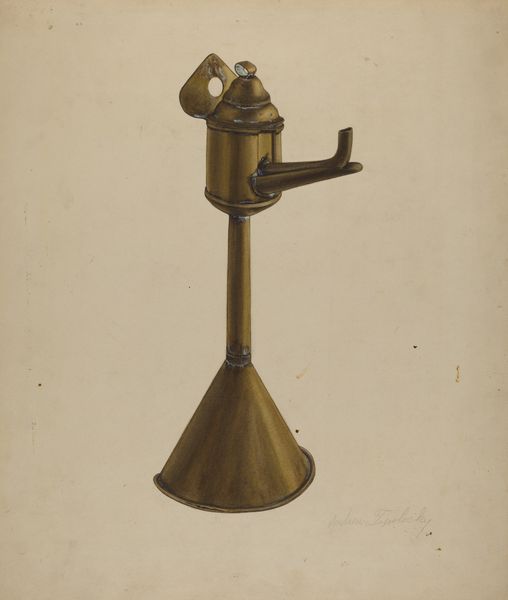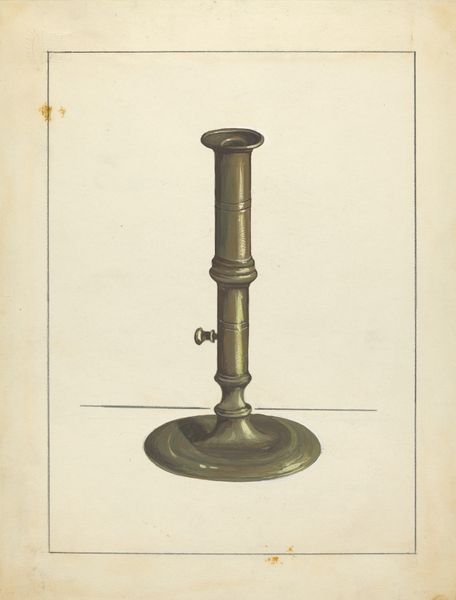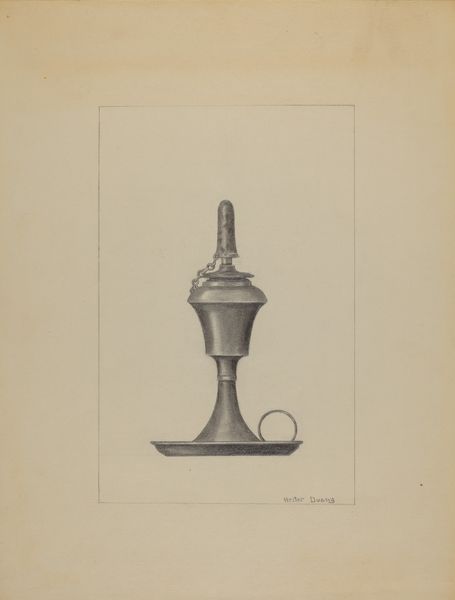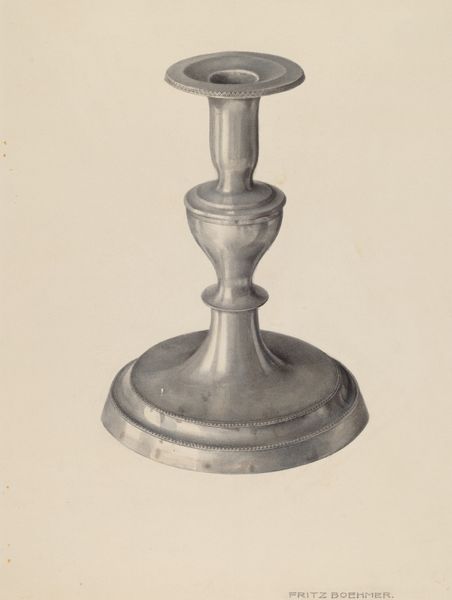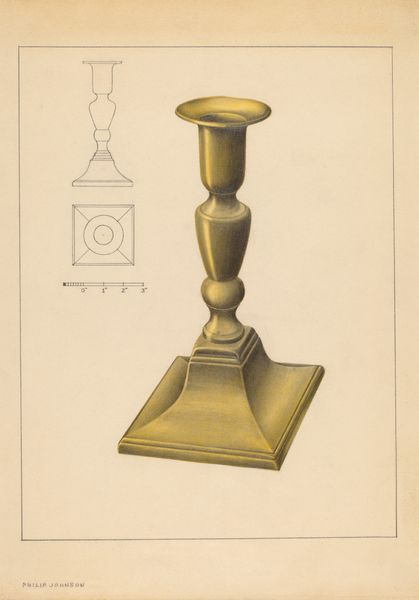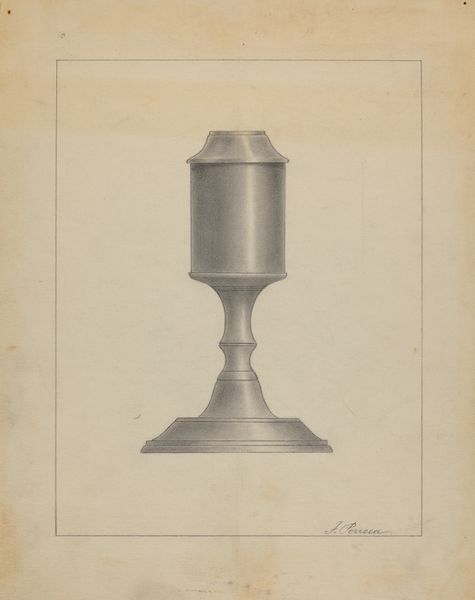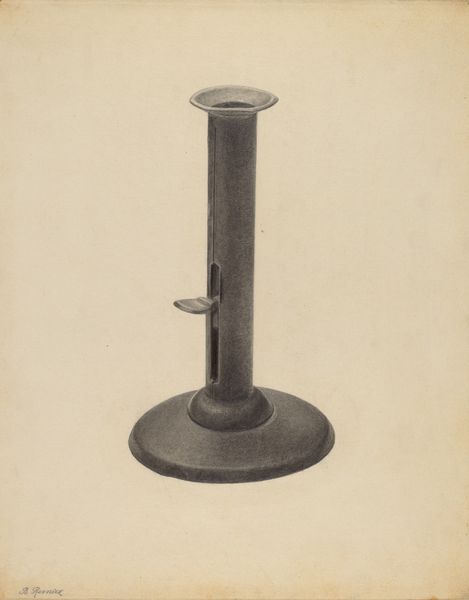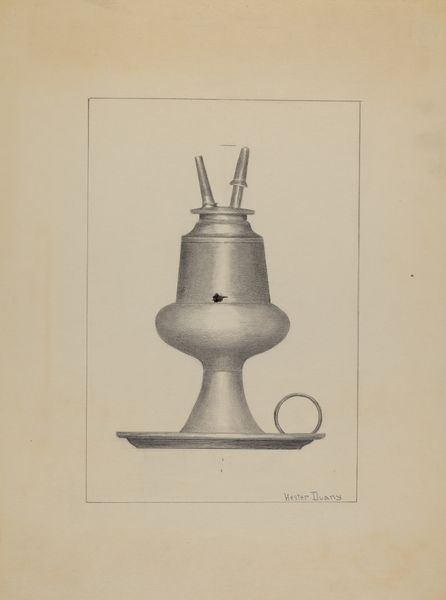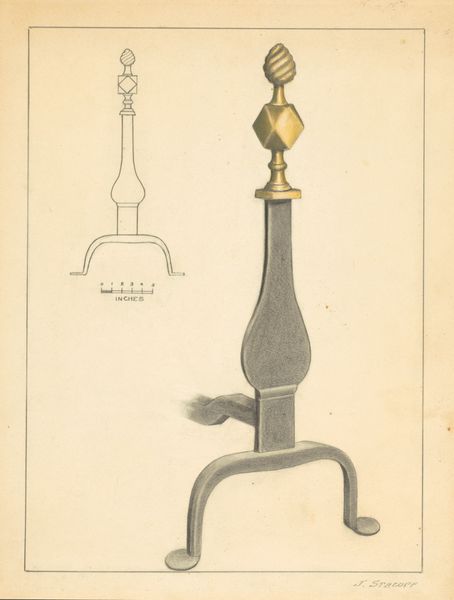
drawing, pencil
#
drawing
#
geometric
#
pencil
#
realism
Dimensions: overall: 29.5 x 22.6 cm (11 5/8 x 8 7/8 in.)
Copyright: National Gallery of Art: CC0 1.0
Editor: This is "Candlestick," a pencil drawing from around 1936 by Yolande Delasser. I'm immediately struck by the geometric quality. It's such a common object rendered with this precision. How do you interpret this work? Curator: What stands out for me is the artist’s command of form. Consider how Delasser has meticulously built the candlestick using only the vocabulary of line and tone. Notice, in particular, how she suggests the cylindrical nature of the central stem solely through subtle variations in shading. It’s almost an exercise in pure representation. Editor: So you're seeing this as a study in form, independent of any symbolism or practical use? Curator: Precisely. The "what" is less important than the "how." Delasser transforms a mundane object into a complex arrangement of geometric shapes and tonal values. Observe the play of light across the metallic surface, creating subtle gradations that define its contours. Do you agree that this technique reveals a preoccupation with the intrinsic qualities of the subject? Editor: Absolutely, the attention to detail is remarkable. I can see how Delasser has focused on the composition and the use of light and shadow to give this drawing dimension and depth. I wasn't sure how much I was seeing at first glance. Curator: That is the beauty of art – with focused looking, the nuances become increasingly evident. In many ways, Delasser guides our gaze toward an appreciation of purely formal elements, divorcing the object from any inherent meaning. Editor: It’s fascinating how an everyday object can be so compelling through purely formal rendering. Curator: Yes, it challenges our preconceptions about subject matter and encourages us to appreciate the skill and artistry in representing the visible world through the artist’s studied eye.
Comments
No comments
Be the first to comment and join the conversation on the ultimate creative platform.

